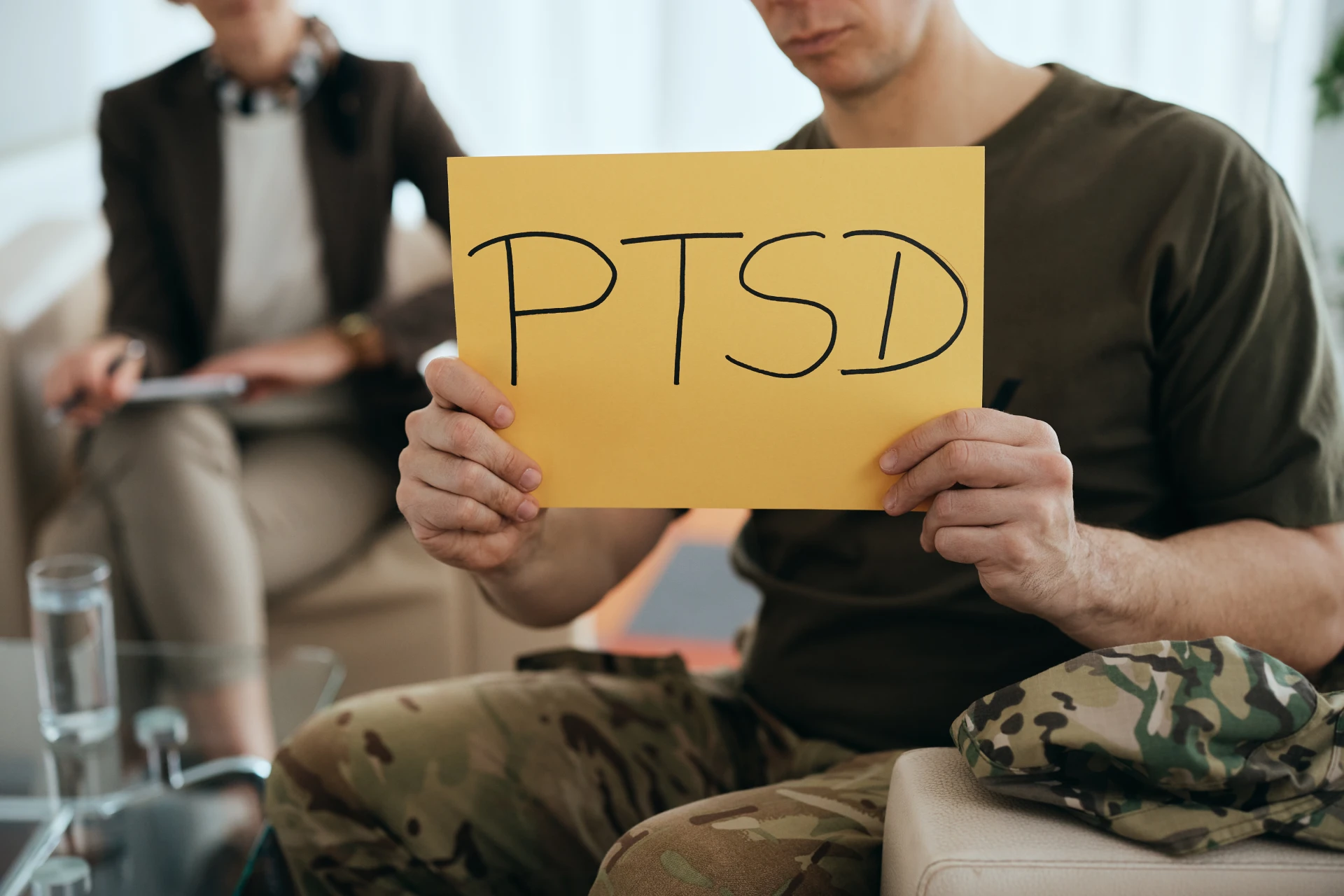Post-traumatic stress disorder (PTSD) is a deeply challenging mental health condition that can arise after experiencing or witnessing a traumatic event. It can affect anyone, regardless of age, background, or circumstance^10. The impact of PTSD can be profound, affecting an individual’s ability to function in daily life, maintain relationships, and experience a sense of safety and well-being.
If you or someone you know is struggling with PTSD, it’s important to remember that healing is possible. This blog will explore evidence-based therapies and compassionate approaches that can support trauma recovery and help individuals reclaim their lives.
Understanding PTSD: The Scars of Trauma
PTSD is more than just remembering a distressing event. It’s a complex condition that involves changes in the brain and body, leading to a range of debilitating symptoms. These symptoms often fall into four main categories:
- Intrusion: This includes intrusive thoughts, memories, flashbacks, and nightmares related to the traumatic event. These experiences can feel incredibly vivid and distressing, as if the event is happening again.
- Avoidance: Individuals with PTSD may avoid people, places, activities, or thoughts that remind them of the trauma. This avoidance can significantly limit their daily life and relationships.
- Negative Alterations in Cognition and Mood: This involves negative beliefs about oneself, others, or the world. It can also include feelings of detachment, hopelessness, shame, guilt, or difficulty experiencing positive emotions.
- Alterations in Arousal and Reactivity: This includes symptoms such as hypervigilance (being constantly on guard), exaggerated startle response, irritability, difficulty concentrating, and sleep disturbances.
It’s important to recognise that not everyone who experiences trauma will develop PTSD. However, for those who do, the symptoms can be persistent and significantly interfere with their quality of life. In the UK, it is estimated that 4 in 100 people experience PTSD at any given time^1. This equates to approximately 2,612,000 people.
The Power of Compassionate Therapy
Therapy is a cornerstone of PTSD recovery. Compassionate and evidence-based therapies can provide individuals with the tools and support they need to process their trauma, manage their symptoms, and build resilience.
Evidence-Based Therapies for PTSD
Several therapeutic approaches have been proven effective in treating PTSD. These therapies often involve processing the traumatic memories in a safe and controlled environment, learning coping skills, and challenging negative thoughts and beliefs.
1. Trauma-Focused Cognitive Behavioural Therapy (TF-CBT)
Trauma-Focused Cognitive Behavioural Therapy (TF-CBT) is a specific type of CBT that has been developed for treating PTSD in children, adolescents, and adults. TF-CBT involves several key components:
- Psychoeducation: Providing information about trauma, PTSD, and the treatment process.
- Relaxation Skills: Teaching relaxation techniques to manage anxiety and stress.
- Affect Modulation Skills: Helping individuals identify and regulate their emotions.
- Cognitive Processing: Challenging negative thoughts and beliefs related to the trauma.
- Trauma Narrative: Creating a narrative of the traumatic event in a safe and supportive environment.
- In-Vivo Exposure: Gradually exposing individuals to avoided situations or activities.
- Conjoint Sessions: Involving family members in the therapy process to improve communication and support.
TF-CBT is a highly effective treatment for PTSD, helping individuals process their trauma, reduce their symptoms, and improve their overall functioning.
2. Eye Movement Desensitisation and Reprocessing (EMDR)
Eye Movement Desensitisation and Reprocessing (EMDR) is another evidence-based therapy for PTSD that involves processing traumatic memories while engaging in bilateral stimulation, such as eye movements, tapping, or auditory tones.
- Eight-Phase Approach: EMDR follows an eight-phase approach that includes history taking, preparation, assessment, desensitisation, installation, body scan, closure, and re-evaluation.
- Bilateral Stimulation: During the desensitisation phase, individuals focus on the traumatic memory while engaging in bilateral stimulation.
- Adaptive Information Processing: EMDR is based on the idea that trauma can block the brain’s natural ability to process information, and that bilateral stimulation can help unlock this process.
EMDR has been shown to be effective in reducing PTSD symptoms, improving cognitive processing, and enhancing emotional regulation.
3. Cognitive Processing Therapy (CPT)
Cognitive Processing Therapy (CPT) is a type of CBT that focuses on identifying and challenging negative thoughts and beliefs related to the trauma.
- Impact Statement: Individuals write a detailed account of the impact of the trauma on their life.
- Challenging Stuck Points: CPT helps individuals identify and challenge “stuck points,” which are negative thoughts or beliefs that are preventing them from recovering.
- Cognitive Restructuring: CPT teaches skills to reframe negative thoughts and develop more balanced and adaptive beliefs.
CPT has been shown to be effective in reducing PTSD symptoms, improving cognitive processing, and enhancing overall functioning.
4. Narrative Exposure Therapy (NET)
Narrative Exposure Therapy (NET) is a therapy that helps individuals create a coherent narrative of their traumatic experiences.
- Life Line: Individuals create a lifeline that represents their life story, marking significant events, including traumatic experiences.
- Trauma Narrative: Individuals recount their traumatic experiences in detail, focusing on the sensory and emotional aspects of the event.
- Testimonial: The trauma narrative is then transformed into a written testimonial that can be shared with others.
NET has been shown to be effective in reducing PTSD symptoms and improving overall functioning, particularly for individuals who have experienced multiple traumatic events.
5. Prolonged Exposure (PE)
Prolonged Exposure (PE) is a type of behavioural therapy that involves gradually exposing individuals to avoided situations or activities related to the trauma.
- In-Vivo Exposure: Individuals confront avoided situations or activities in real life.
- Imaginal Exposure: Individuals repeatedly recount the traumatic event in detail.
PE has been shown to be effective in reducing PTSD symptoms and improving overall functioning.
The Importance of a Trauma-Informed Approach
Regardless of the specific therapy used, it’s crucial that the therapist adopts a trauma-informed approach. This means understanding the impact of trauma on the individual’s brain, body, and behaviour, and creating a safe and supportive therapeutic environment.
Key elements of a trauma-informed approach include:
- Safety: Creating a physical and emotional environment where the individual feels safe and secure.
- Trustworthiness and Transparency: Being honest and open with the individual about the treatment process.
- Collaboration and Mutuality: Working collaboratively with the individual and empowering them to make decisions about their treatment.
- Empowerment, Voice, and Choice: Providing opportunities for the individual to exercise their voice and choice in the therapy process.
- Cultural, Historical, and Gender Issues: Recognising and addressing the impact of cultural, historical, and gender issues on the individual’s trauma experience.
Complementary Therapies for PTSD
In addition to evidence-based therapies, several complementary therapies can support PTSD recovery. These therapies can help individuals manage their symptoms, reduce stress, and improve their overall well-being.
- Mindfulness-Based Practices: Mindfulness meditation, yoga, and other mindfulness-based practices can help individuals increase awareness of the present moment and reduce reactivity to traumatic memories and emotions.
- Art Therapy: Art therapy can provide a creative outlet for expressing emotions and processing trauma.
- Music Therapy: Music therapy can help individuals regulate their emotions and connect with their inner selves.
- Equine Therapy: Equine therapy involves interacting with horses to improve emotional regulation, self-esteem, and communication skills.
- Acupuncture: Acupuncture may help reduce anxiety, improve sleep, and alleviate physical pain associated with PTSD.
Finding a Qualified Therapist
Finding a qualified therapist who specialises in trauma recovery is essential. Look for a therapist who is licensed, experienced, and has specific training in evidence-based therapies for PTSD.
Questions to ask a potential therapist:
- Are you licensed to practice therapy in the UK?
- What experience do you have working with individuals with PTSD?
- What specific therapies do you use to treat PTSD?
- Do you have training in trauma-informed care?
- What is your approach to therapy?
- What are your fees?
It’s also important to find a therapist with whom you feel comfortable and safe. The therapeutic relationship is a key factor in successful PTSD recovery.
Self-Care Strategies for PTSD Recovery
In addition to therapy, self-care is essential for managing PTSD symptoms and promoting overall well-being.
- Prioritise Sleep: Aim for 7-8 hours of sleep per night.
- Eat a Healthy Diet: Nourish your body with nutritious foods.
- Engage in Regular Exercise: Exercise can reduce stress and improve mood.
- Practice Relaxation Techniques: Use relaxation techniques, such as deep breathing or progressive muscle relaxation, to manage anxiety.
- Connect with Others: Spend time with supportive friends and family.
- Engage in Hobbies and Interests: Participate in activities that bring you joy and purpose.
- Set Boundaries: Learn to say no to demands that are overwhelming or triggering.
- Practice Self-Compassion: Treat yourself with kindness and understanding.
The Importance of Support Systems
Having a strong support system is crucial for PTSD recovery. Connect with friends, family, support groups, or online communities where you can share your experiences and receive encouragement.
Final Thoughts: Reclaiming Your Life After Trauma
Healing from PTSD is a journey that requires courage, commitment, and compassionate support. By seeking evidence-based therapy, practicing self-care, and connecting with others, you can reclaim your life and build a future filled with hope and healing.
Remember, you are not alone, and recovery is possible.








